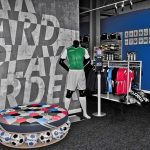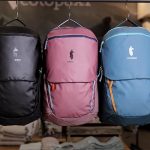According to the SnowSports Industries America (SIA) Retail Audit for the August through November period, sales at chain stores were up 12.2% to $145.3 million in sales compared to $129.5 million in 2003. Unit sales were down 5.9% from last season.
“Amidst higher equipment retail prices, trends in integrated systems, Nordic equipment and soft shells highlight this season’s sales thus far. Soft shells have found a home in chain stores — increasing 184% in dollar sales this season over last” said Christine Martinez, market research manager for SIA, the not-for-profit industry trade group that represents manufacturers and distributors of snow sports products. The SIA Retail Audit tracks and reports sales in all snow sports product categories. This is the second report of six that look at sales through March 31, 2005, the end of the winter season.
HIGHER RETAIL PRICES SPIKE DOLLAR INCREASES
Overall equipment sales (alpine, snowboard, Nordic, Telemark and Randonee/AT) were up 8% in dollars as compared to last season with season-to-date sales totaling $45.6 million. Equipment sales fell in units but average retail prices surged from $112 last year to $127 this year. Alpine equipment sales (including skis, systems, boots, bindings and poles) managed a gain of 9% over last season ending November 2004 with $22.1 million in sales. Average retail prices jumped from $122 to $143. This gain can also be attributed to the surge in integrated ski systems sales.
Alpine skis, excluding integrated systems, fell 12% in dollars as integrated ski systems rose 33% in dollars over last season. Average retail prices of integrated ski systems decreased from $363 to $339. Last year in the same period, alpine skis outsold integrated systems 2.4 to 1 in dollars. This season the ratio fell
to 1.6 to 1.
Every alpine ski category was down in units with the exception of carve skis (up 20% in dollars) and fat skis (up 21% in dollars). Average retail prices of carve skis moved from $201 last year to $236 this year. Midfat skis, 32% of all units sold, plummeted 28% in dollars.
In August – November of this season, alpine boots picked up 24% in dollars thanks to higher retail prices this season over last. Sport performance boots performed well with $2.9 million in sales, an increase of 29% over last season. High performance boots ($292 average retail) grew 41% in dollars while recreation boots jumped 8% in dollars. With an average retail price of $158 (up from $126), soft boot sales dropped 13% in dollars.
Stand-alone bindings managed a slight 1% dollar increase over last season, with season-to-date sales reaching $2.6 million. In dollars, the DIN 8-11 category increased 9%, DIN 12-14 slid 9% and juniors dropped 5%. Carryover binding sales were up 15% in dollars while plunging carryover pole sales dragged the pole category down 4% in dollars.
Alpine pole sales were down 4% over last season, reaching $850,000 in season-to-date sales. Adult poles (down 1%), junior poles (up 2%) and a huge 36% drop in carryover pole sales all contributed to the category performance.
SEASON LOOKS PROMISING FOR NORDIC CATEGORIES
Nordic ski equipment sales (including skis, boots, bindings and poles) ended November up 37% in dollars over last season, totaling $1.7 million in season-to-date sales. Nordic skis, at a $93 average retail price, (up 55%), bindings (up 86%) and poles (up 38%) all experienced substantial gains in dollar sales over last season.
Telemark ski equipment (including skis, boots and bindings) dollars shot up 12%, ending November 2004 with $423,000 in sales. The average retail selling price for a telemark ski dove from $336 to $306, boots from $289 to $229 and bindings from $99 to $91.
SNOWBOARD EQUIPMENT SALES INCREASE AS UNITS FALL
Through November 2004, snowboard equipment sales were up 5% in dollars as compared to last season with total sales reaching $21.2 million. Snowboard units fell and dollars edged up 2% over last season as average retail prices jumped from $163 to $187 this season. Units of snowboard boots and bindings also fell; however, dollar sales managed small increases, 8% and 6%, respectively. All mountain boards, at an average retail price of $173, grew 14% in dollars while freestyle boards, at an average retail price of $242, jumped 14% in dollars.
Retailers did not have a lot of boards left over to sell this fall as carryover snowboard sales declined 9% in dollars. Carryover boots and carryover bindings, however, managed to increase sales, up 17% and 57%, respectively.
SOFT SHELL PARKAS AND VESTS SHOW STRONG GAINS
Chain store apparel sales rose 15% in dollars, with season-to-date sales reaching $57.8 million. The average retail price for an apparel item moved from $72 to $80 comparing this August – November period to the same period in 2003.
Shell parkas (up 13%), soft shell parkas (up 184%), fleece (up 41%), vests (up 101%) and insulated waist pants (up 24%) all experienced dollar increases as compared to last season. Consumers like the chain stores base layer offerings – unit sales were up 23%. Apparel suits, bibs and sweaters did not fare as well, with sales down 43%, 48% and 22%, respectively.
Snowboard apparel did manage to make some strong gains in chain stores so far this season, up 14% over last season to $9.6 million. Women drove snowboard top sales with 25% dollar increases compared to the men’s 1% dollar increase. Snowboard bottoms were up 15% this season over last.
Apparel accessories performed well, with $25.5 million in sales thus far this season, a 25% increase over last season. As in specialty stores, winter boots were again hot in the chain stores this season. Winter boots (up 108%) and base layer (up 64%) drove category dollar growth. Except for auto racks (up 31% in dollars) and snowshoes (up 26% in dollars), most equipment accessory categories were down in the double digits. As a result, the equipment accessory category fell 3% behind last season’s dollars for the same period. Thanks in part to apparel accessories, the entire accessories category was up 12% in dollars with sales at $41.9 million through November 2004.















